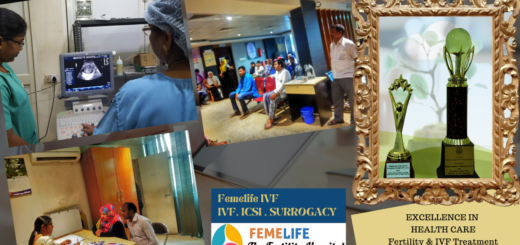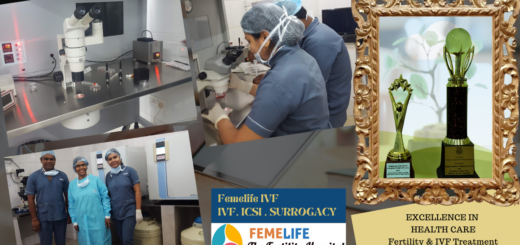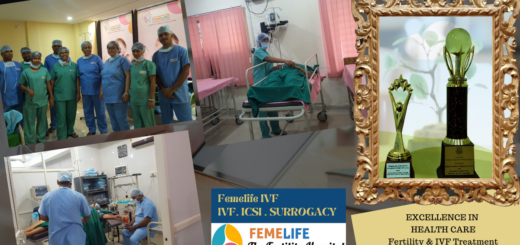First Trimester Screening Test

First Trimester Screening
The first-trimester screening is a test to assess the risk factors of the fetus for chromosome disorders such as Down syndrome (trisomy21) or Edwards syndrome (trisomy18). This test combines your blood tests like PAPP-A and HCG with ultrasound of your fetus for nuchal translucency.
When to get tested?
You can do the test between 11 to 14 weeks of pregnancy. However, your doctor may check the growth of the baby before advising this test to avoid errors in dating the pregnancy.
What is being tested?
The first-trimester screening is a combination of two blood tests and a special ultrasound. This combination is useful to assess a pregnant woman’s risk factor for carrying a baby with Down syndrome (trisomy21) or Edwards syndrome ( trisomy18). Pregnant mothers’ age is also important for accuracy of results of this test. Older women have higher risk of carrying a baby with chromosome disorders.
What is implicated in first trimester screening?
The placenta releases a protein, Pregnancy-associated plasma protein A (PAPP-A) . In a normal pregnancy, the level of protein increases slowly till the delivery.
Human chorionic gonadotropin (hCG) is also produced during pregnancy in large quantities by the placenta. Free or total HCG calculation is a part of first-trimester screening. Levels of these hormones usually rise steadily for 8 to 10 weeks in pregnant women. Afterwards, it decreases and stabilizes at the lower level for the remainder of the pregnancy.
Nuchal translucency is an ultrasonic measurement of the fetus. Here, the thickness between the spine and skin at the nape of the fetus’s neck is an important feature. A specially trained doctor with experience usually performs this test. Proper alignment of the fetus during ultrasound, and careful measurement is the basic requirement of this test. It is a special ultrasound test. This procedure is not available at every hospital or health facility due to lack of expertise.
Positive first-trimester screening test requires higher diagnostic tests such as amniocentesis or chorionic villus sampling (CVC) for further evaluation.
How is the sample collected for testing?
The blood collection for this test requires no extra precaution, Usually the nurse can draw from the vein of pregnant women‘s arms or collected from a finger stick. Abdomen ultrasound of pregnancy can detect the nuchal thickness. However, your doctor may advise for a transvaginal ultrasound for better clarity.
How to prepare for the first trimester screening test?
You need to fill your bladder before the NT scan.
How is the 1st trimester screening used?
The first-trimester screen is to give expecting women the option of earlier screening. However, the first-trimester screen cannot identify structural defects like spina bifida. This needs triple or quad screening in the second trimester of the mother.
What does the test result mean?
Your doctor can explain the meaning and offer choices about the follow-up of the screening results. She may refer to specially trained genetic counsellors for discussion.
This test includes various mathematical methods using the results obtained from the PAPP-A, HCG, and nuchal thickness. Ultrasound measures of nuchal thickness can predict numeric risk of chromosomal defects in the fetus. Your doctor charts this value with an established cut-off. If your risk is more than the standard values (for e.g. probability of 1 in 230 or higher), then your doctor may consider you as screen positive. In this case, the woman may be at increased risk for having a baby with a chromosomal abnormality.
What is next if you are screen positive?
It is important to understand that screen positive is not diagnostic of fetal defects. Subsequent tests prove useful to confirm the results of first trimester screening. Although this test indicates an increased risk, only a very small number of women with a positive first-trimester screen have babies who actually have a chromosome disorder.
In pregnancies with the fetus is carrying a chromosomal defect such as extra chromosome material that results in Down syndrome or Edwards syndrome, the levels of PAPP-A seems to be less. Such women have high levels of hCG in the blood, and the space at the fetus’s neck may be wider.
While the first-trimester screen can correctly identify approximately 85% of women carrying a fetus with Down syndrome and up to 75% of these with Edwards’s syndrome, about 5% -10% of normal pregnancies will have false-positive results.
More about 1st-trimester screening:
This first-trimester screening may not detect all cases of fetal abnormalities.
The results depend on the expertise and techniques of radiologists measuring nuchal translucency. It also depends on accurate calculation of the gestational age of the fetus. Any miscalculation of gestational age of the fetus can falsely implicate high or low values.
Twin pregnancies are difficult to diagnose and calculate the risk of Down syndrome or Edwards syndrome. However, the nuchal translucency ultrasound, is a useful tool as it is unique to each fetus.
What is Down syndrome?
About 1 in 700 babies are born with Down syndrome (trisomy21) every year. The condition causes mild to moderate mental retardation and development problems in the baby. Also, baby may have congenital heart defects, respiratory and hearing problems, leukemia, and thyroid disorders. Recently, Down syndrome babies are being treated and managed well at specific centers to prolong their lifespan. The risk of having a child with Down syndrome or other chromosomal abnormality will increase with the age of the mother.
What is Edwards syndrome?
Edwards syndrome is a similar chromosome disorder of chromosome 18 containing an extra copy. Advanced maternal age is a risk for Edwards syndrome as well. Edwards syndrome causes more abnormalities in the fetus. It is rare to have live-born infants beyond one year of age with Edwards syndrome. However, the occurrence of this abnormality is much less than Down syndrome, occurring in only 1 in 6000 live births.





















